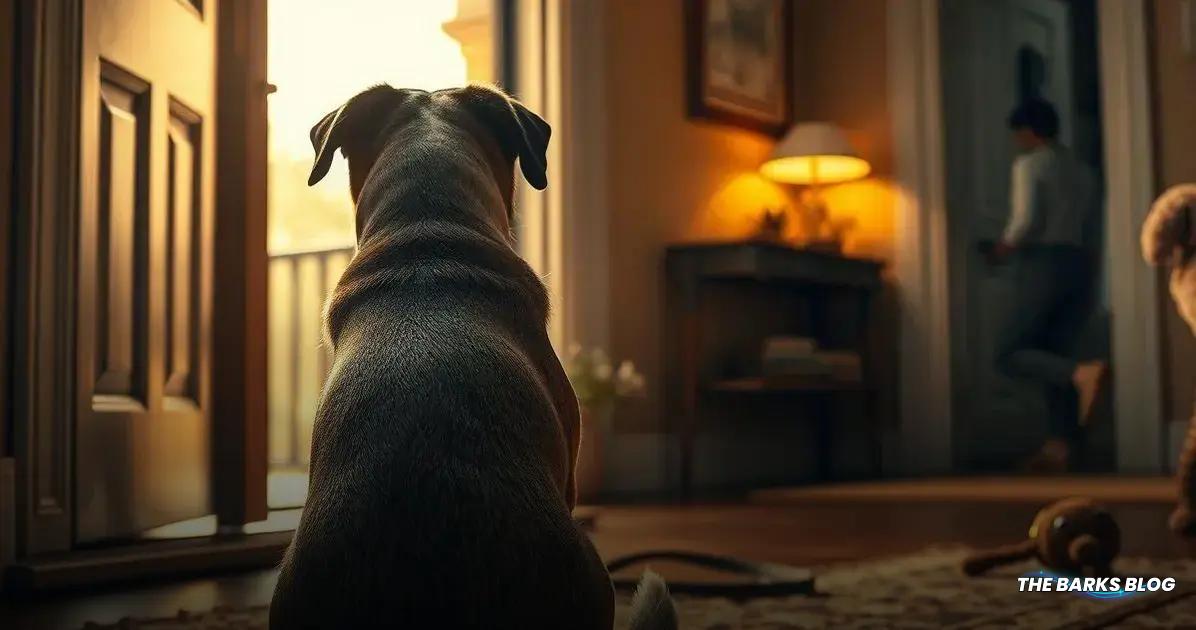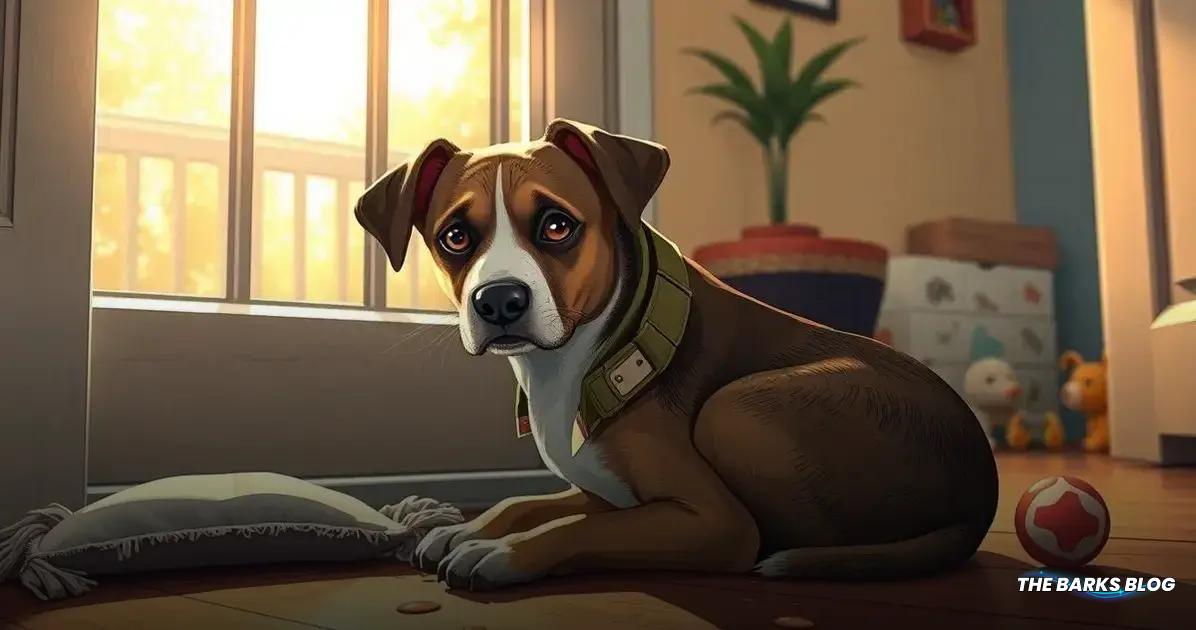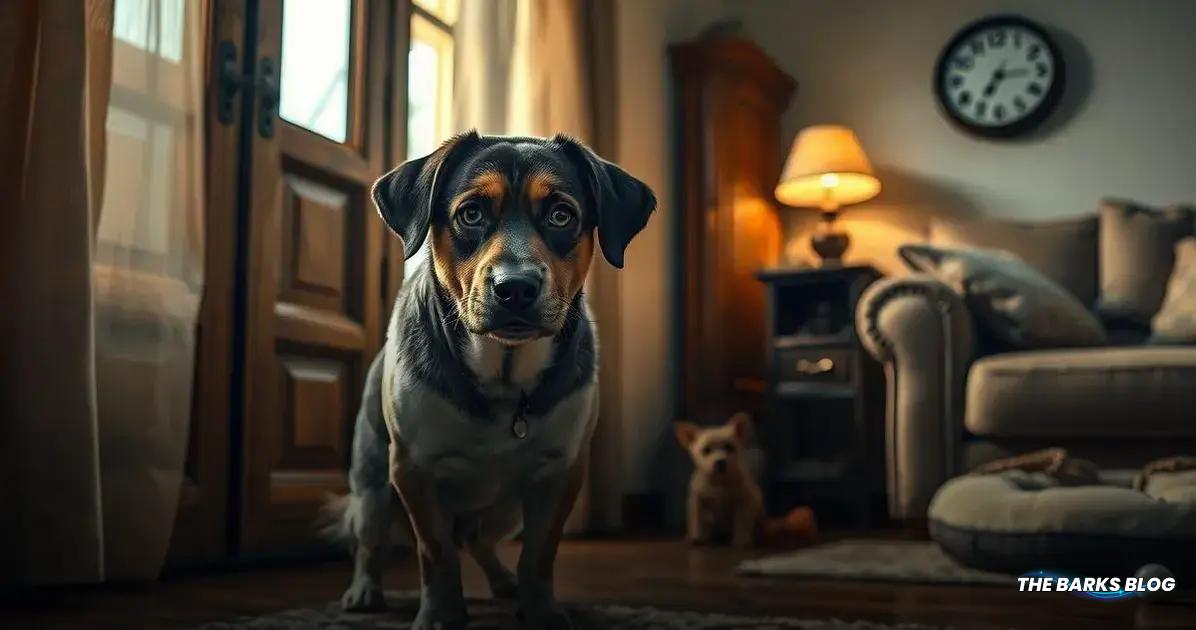Separation anxiety in dogs manifests through signs like destructive behavior, excessive barking, and escape attempts. It can stem from feelings of abandonment or changes in routine. To manage this anxiety, effective strategies include gentle desensitization, regular exercise, and crate training, which can help your dog feel more secure and relaxed.
Separation anxiety in dogs is a common issue affecting 76% of American dogs. Understanding the signs and causes can help you support your furry friend.

Signs of Separation Anxiety
Every dog is unique, and while excessive barking and crying are classic signs of separation anxiety, it can manifest in various other ways. Here are some key signs to watch for:
#1: Destructive Behavior: Dogs may cope with stress by chewing furniture, scratching doors, or digging. This behavior often occurs when they feel anxious about being left alone.
#2: Crying, Barking, or Whining: This can be a nuisance for neighbors! While barking at passersby is natural, it can become problematic when your dog is left alone and starts to vocalize excessively.
#3: Accidents in the House: Even a housetrained dog might have potty accidents when anxiety strikes. This can be a clear indicator that your dog is struggling with separation.
#4: Restlessness: Signs like pacing, excessive licking, panting, and shaking when left home alone may indicate that your dog is feeling uneasy and anxious.
#5: Attempts to Escape: Some dogs may try to escape through the same door as their owners after they leave. This behavior shows their distress and desire to stay with you.
While these signs may suggest separation anxiety, it’s crucial to consult your veterinarian to rule out any underlying medical conditions that could be contributing to your dog’s behavior.

Causes of Separation Anxiety
There isn’t a single cause of separation anxiety in dogs; rather, it can stem from various factors. Here are some potential causes to consider:
Feeling Abandoned by the Pack: Dogs are instinctively pack animals. They may perceive your departure as a rejection, triggering panic and anxiety. This is especially common in rescue dogs who have previously experienced loneliness and isolation.
Change in Routine: If you’ve recently moved to a new home or your work schedule has changed, these unexpected shifts can leave your dog feeling confused and anxious. Changes in their environment or daily routine can significantly impact their sense of security.
Missed Out on “Me Time”: If your dog isn’t accustomed to being alone, they may struggle with separation anxiety. Just like human babies, puppies need to learn to tolerate alone time gradually. Ideally, well-adjusted dogs should be taught to be comfortable with solitude from a young age.
Understanding these causes can help you address separation anxiety more effectively and provide the support your dog needs to feel secure when left alone.

How to Help a Dog with Separation Anxiety
The good news is that separation anxiety in dogs is manageable! With patience and a strategic approach, you can help your furry friend overcome the discomfort of being alone. Here are some effective solutions:
Desensitize Gently: It’s important for your dog to feel comfortable being alone. Start by desensitizing them to triggers, like the sound of the front door. Engage in your usual departure routine—put on your shoes, jingle your keys—without actually leaving. This helps your dog stop associating these activities with distress. Gradually accustom your dog to being alone by starting with short absences and working your way up. Always reward calm behavior upon your return.
Get Moving: A tired pup is a calm pup! Engage in some dog exercise at home or outside to promote the release of positive hormones, keeping your furry friend relaxed and happy. Consider taking them for a walk or playing a fun game of tug-of-war before you head out.
Don’t Make a Fuss! Avoid dramatic goodbyes or excessive attention when leaving or arriving home. This can heighten your dog’s emotional state, making them think something significant is happening, which can lead to anxiety. Keep your farewells calm, positive, and quick.
Chew It Out: Provide mental and physical stimulation with toys, puzzles, and chew treats! Letting your dog play with an engaging toy before you leave can help release excess energy and may prevent them from chewing on furniture while you’re gone.
Make Crate Time a Good Time: Crate training can be a valuable tool for managing separation anxiety. Think of the crate as a cozy den where your dog feels safe while waiting for your return. Ensure it’s a place associated with positive experiences, outfitted with comfy blankets. However, keep in mind that every dog is different; if crate training seems to increase anxiety, consider alternatives like gating off a dog-proof room or using a playpen.
Conquering Separation Anxiety: With understanding, patience, and the right approach, it’s possible to help your dog overcome separation anxiety. Start small, stay consistent, and always reward good behavior! By understanding the causes and methods to help, your furry friend can enjoy a happier, more relaxed life.
Conclusion
Separation anxiety in dogs can be challenging, but with the right strategies and understanding, it’s possible to help your furry friend feel more secure when left alone.
By recognizing the signs, understanding the causes, and implementing effective solutions, you can significantly improve your dog’s emotional well-being.
Remember, patience and consistency are key.
With time, your dog can learn to cope with separation, leading to a happier and more relaxed life for both of you.
FAQ – Frequently Asked Questions about Separation Anxiety in Dogs
What are the common signs of separation anxiety in dogs?
Common signs include destructive behavior, excessive barking or whining, house accidents, restlessness, and attempts to escape.
What causes separation anxiety in dogs?
Causes can include feeling abandoned, changes in routine, and not being accustomed to being alone.
How can I help my dog with separation anxiety?
You can help by desensitizing them to triggers, providing regular exercise, keeping goodbyes calm, and using engaging toys.
Is crate training effective for dogs with separation anxiety?
Crate training can be effective if the dog associates the crate with positive experiences. However, if it increases anxiety, consider alternative options.
How long does it take to help a dog overcome separation anxiety?
The time it takes varies by dog, but with consistent effort and patience, many dogs show improvement within weeks.
Should I consult a veterinarian about my dog’s separation anxiety?
Yes, it’s important to consult a veterinarian to rule out any underlying medical conditions that may be contributing to your dog’s anxiety.




